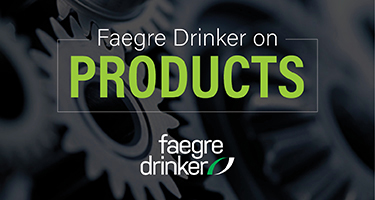Even “[a] supremely qualified expert cannot waltz into the courtroom and render opinions” unless those opinions pass muster under Federal Rule of Evidence 702. Clark v. Takata Corp., 192 F.3d 750, 759 n.5 (7th Cir. 1999). As a recent case from the Eastern District of North Carolina illustrates, this principle is at play not only when critiquing an expert’s methodology, but also the expert’s expertise.
In Williams v. Sig Sauer, Inc., — F. Supp. 3d —, 2025 WL 2643400 (E.D.N.C. Sept. 8, 2025), the plaintiff was an “enforcer” for his motorcycle club who “protect[ed]” and “monitor[ed]” the club members. He alleged that his pistol discharged and injured him while he was adjusting his position on his motorcycle. In support of his product liability claims against the manufacturer of the pistol, he proffered two expert witnesses: a gunsmith and a mechanical engineer. The defendant moved to exclude both experts and filed a motion for summary judgment.
The court began its analysis with an impressively detailed exposition of Federal Rule of Evidence 702’s recent amendment (which we discussed here) and the leading cases interpreting it, from the Fourth Circuit’s opinion in Sardis (discussing the amendment before it took effect) to the Federal Circuit’s en banc holding in EcoFactor (holding the district court had abused its discretion by admitting expert testimony) and the Ninth Circuit’s tour de force in Engilis (which we discussed here). The court even cited the U.S. Supreme Court’s Joiner decision — the sometimes underappreciated “middle child” of the Daubert trilogy — five times throughout its discussion. The court’s comprehensive rule statement regarding Rule 702 will make a good addition to any practitioner’s toolbox, and it set the table for a fine illustration of how Rule 702 gatekeeping is supposed to work in practice.
Although the plaintiff’s first expert had 55 years of experience as a gunsmith, it was mostly limited to firearm repair, modification, and troubleshooting. He was not an engineer, and his experience in designing firearms was limited to competition firearms that have lighter trigger pulls and are not designed for civilians to carry and use in daily life. Because they differ consequentially from the consumer model at issue in the case, the court concluded that the expert’s limited design experience did not qualify him to opine on the firearm at issue. The court also took issue with the expert’s failure to explain how the various defects he purported to identify could have caused the firearm to discharge without the trigger being pulled under the facts of the case. For example, the expert had discharged the firearm by mashing a plastic straw into the front of the pistol. But that was irrelevant, because he had not found any debris as thick as the straw inside the plaintiff’s pistol. The plaintiff argued that these issues went to the weight of his testimony rather than its admissibility. The court rejected that argument, citing the 2023 amendment to Rule 702, and excluded the gunsmith’s opinions as unqualified and unreliable.
The plaintiff’s second expert held advanced degrees in mechanical engineering (and, interestingly, in law) and taught courses related to the manufacture of mechanical devices, including firearms. However, he had no professional experience in firearm design, testing, or manufacturing and had never worked in the firearms industry. As the court noted, expertise in general mechanical engineering does not automatically translate to specialized knowledge of firearm mechanics. The court also found his methodology unreliable, as it relied on speculative theories involving holster deformation, internal component movement, and debris interference that were unsupported by testing, data, or inspection of the actual firearm. For example, the expert tested his holster deformation theory only with the plaintiff’s damaged holster and not with an undamaged holster like plaintiff would have had prior to the incident. Moreover, the expert’s failure to identify any debris in the plaintiff’s pistol undermined his latter two theories, both of which assumed debris accumulation. Because the plaintiff failed to demonstrate that the expert reliably applied his knowledge and experience to the facts of the case, the court excluded the engineer’s opinions as unqualified and unreliable.
With both of his experts excluded, the plaintiff could not establish defect or causation and thus could not establish his claims. But there were additional problems. With respect to his failure to warn claims in particular, the plaintiff had testified that he did not read the operator’s manual. Thus, even if the experts’ opinions were admissible, his inadequate warning claim would have failed for lack of causation. Additionally, because the plaintiff’s concealed carry as an “enforcer” constituted a criminal offense, the court held that the criminal concealed carry was the sole proximate cause of his personal injuries and granted summary judgment under the Protection of Lawful Commerce in Arms Act.
Williams excluded two experts who, although arguably well-qualified to offer some opinion, were not qualified to offer the particular opinions they proffered in the case at hand. The order aptly illustrates how an expert can possess “scientific, technical, or other specialized knowledge” yet fail to satisfy Rule 702(a) if that expertise does not “help the trier of fact to understand the evidence or to determine a fact in issue.” The experts’ failure to adapt their theories of defect and causation to the evidence in the case did not help matters, offering independent grounds for exclusion. Williams is citable not only for its impressive discussion of Rule 702 but for its care in applying the Rule.
The material contained in this communication is informational, general in nature and does not constitute legal advice. The material contained in this communication should not be relied upon or used without consulting a lawyer to consider your specific circumstances. This communication was published on the date specified and may not include any changes in the topics, laws, rules or regulations covered. Receipt of this communication does not establish an attorney-client relationship. In some jurisdictions, this communication may be considered attorney advertising.

